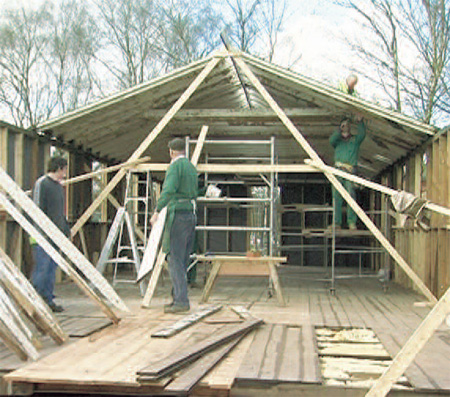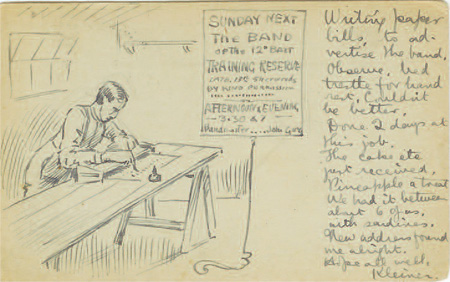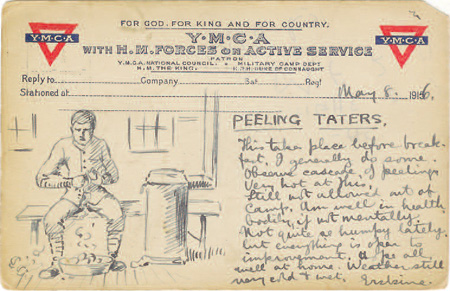
| The Great War hut |
|
This barrack hut was originally
situated at one of the two military
camps that were built on Cannock
Chase during the Great War. It has
been carefully
The construction of the camps and their huts
Construction of two large military camps, Brocton
Camp and Rugeley Camp, began in the autumn of
1914, only months after the outbreak of the Great
War. They were built on Lord Lichfield’s estate.
A workforce of over 100 men built the camp and
the associated railway – later nicknamed the
Tackeroo. The infrastructure of the camps – water
supply, sewage and roads – had to be put in place
before work on the huts could
The role of the camps and their inhabitants Initially the camps were primarily used as transit centres for trained soldiers travelling towards the western front. On completion they became a training facility for battalions including the New Zealand Rifle Brigade, who later made Cannock Chase their UK headquarters. When the Great War ended, the camps became akin to ghost towns – the rows of huts stood empty in an unaccustomed quiet. At the request of Lord Lichfield, the huts were gradually sold off and were transported to their new locations by horse and cart. |
The hut reconstruction
When the camps closed after the Great
War, this hut was dismantled and moved
|
| Explore and discover Life in the camps |
|
I’ve borrowed this [writing] paper from a very youthful soldier… He’s only 15… He can do all the soldiers’ work and carry the 96lbs of equipment… This morning had sausage (in the singular) for breakfast, slightly burnt on the side in contact with the pan.
Writing paper bills to advertise the band. Observe, bed trestle for hand rest. Couldn’t be better. Done 2 days at this job. The cakes etc just received. Pineapple a treat. We had it between about 6 of us, with sardines.
|
This takes place before breakfast. I generally do some
obscure caserole [sic] of peelings. Very hot at this.
Still not allowed out of Camp. Am well in health, bodily
if not mentally. Not quite as humpy[?] lately, but
everything is open to improvement. Hope all well at
home. Weather still very cold and wet. |
Cannock Chase Heritage Trail Kiosk Disclaimer





